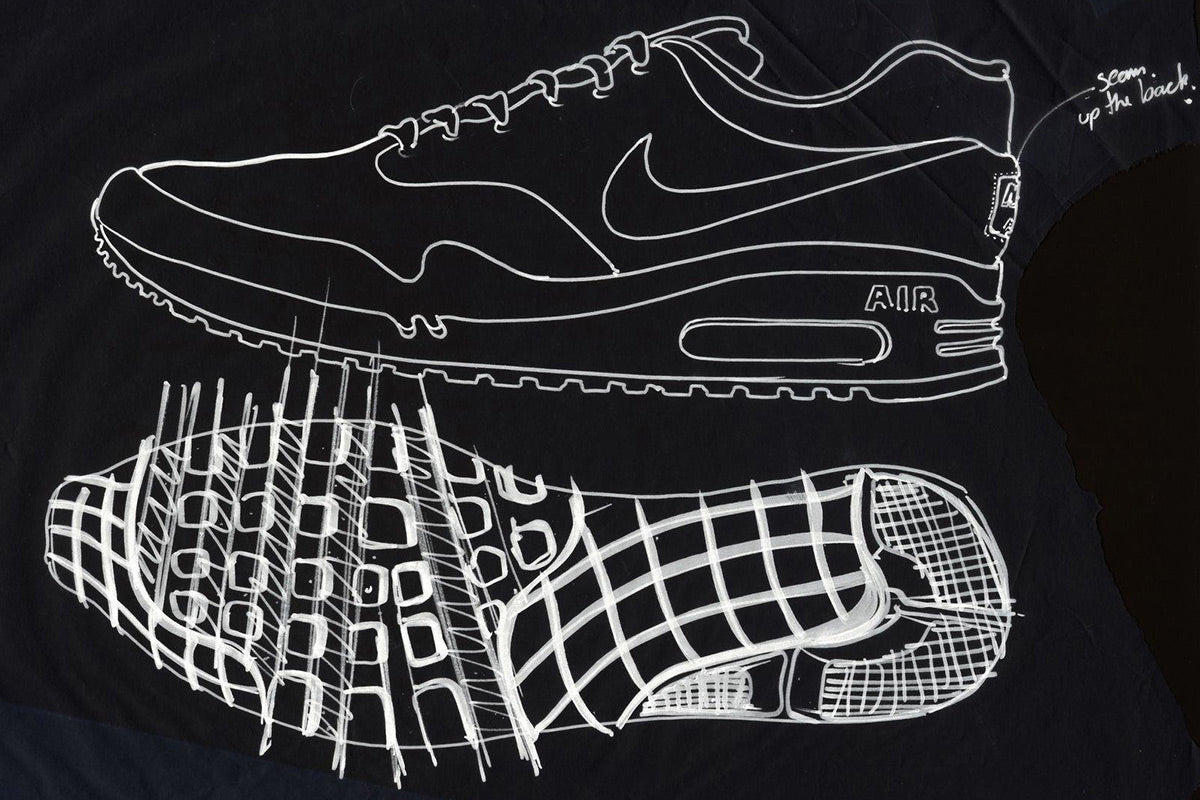
It’s More Than Just AIR - A History of Nike’s Air Max Technology
Nowadays, the word “air” is basically synonymous with Nike (just ask Virgil Abloh), and it’s all thanks to the Swoosh’s Air Max range. The Visible Air unit shared by all Air Max styles revolutionised the sneaker game, and was a technological innovation that gave Nike a lasting edge. From the Air Max 1, 90, 95, 96, 98, to the Air VaporMax, Plus and so many more... everyone owns a pair of Air Maxes (and if you don’t, well, it’s about time)! Rooted in performance and technology, the Air Max lineup has become the go-to for lifestyle silhouettes and home to some of the hottest collaborations and limited drops.


But of course, there was a time when Air Maxes didn’t exist. The Air Max 1 has its roots in a 1978 creation - the Nike Air Tailwind, which included technology created by M. Frank Rudy. An ex-NASA employee, he figured out how to take inert gas, pump it into a bubble and then insert it into the sole of a sneaker for added cushioning. But that wasn’t enough. Almost a decade later in 1987, famed Nike designer Tinker Hatfield decided to go further by making the Air Unit visible. By doing so, well, seeing is believing right? It was a huge risk and one that many Nike execs weren’t willing to take, but Hatfield teamed up with Nike’s Director of Cushioning Innovation, and the duo embarked on a journey that changed the landscape of footwear forever.
Before he came to that realization, Hatfield was a relatively new Nike employee who was tasked with a mission to create an entire new product lineup. As the story goes, Hatfield traveled to Paris for inspiration when he came across the Centre Georges Pompidou. Its designers, Renzo Piano, Richard Rogers and Gianfranco Franchini, put all of the building’s internal elements (such as plumbing, staircases and electrical wiring) on its exterior. Hatfield was immediately inspired, and went back to Beaverton on a mission to make the shoe’s inner workings visible and thus, the Air Max was born on March 26 1987.
Of course, making the Air Unit visible wasn’t just an aesthetic thing. By unconstraining the air bubble, it was now able to expand and contract - responding to the wearer’s movements. Using air had benefits too, because it doesn’t break down. According to Forland, “If you look at the history of Air Max, especially from 1987 to 1993, one of the main differences among models was each version held a greater volume of air than the last one, and conversely the least amount of foam. Foam breaks down; air doesn’t.”
The Air Max 1 laid the groundwork for years to come, and 30 years later - the Air Max family is still as strong as ever. Following the Air Max 1, the Visible Air units just kept expanding, and the goal became to eliminate foam entirely. Following the Air Max 1, the Air Max 90 and 180 were the first silhouettes featuring an uninterrupted Air Sole unit to the outsole, meaning there was no foam in between the ground and the Air Unit.


The quest for a full Air Sole continued, and a technique called blow-molding changed the game. It allowed the creation of 3D Air Soles that didn’t depend on air pressure (as first seen on the Air Max 93), and it let Nike to create Air Sole shapes that formed to the forefoot. In came the Air Max 95, which featured the first Visible Air unit in the forefoot. A few years later and thanks to another technological advancement, the Air Max 97 was born. The Air Sole became one piece from the forefoot to heel, and a full-length 3D foam mold holds it together. The first Air Max to really feature a fully foamless shoe was the Air Max 360 that debuted in 2006 - almost 20 years after the Air Max 1.
While Nike finally achieved its goal of creating a completely foamless shoe, the innovation didn’t stop there. Since the 360, we’ve seen seminal designs from the Air Max Zero (based on Hatfield’s first Air Max design sketch) and the VaporMax. For this year’s Air Max Day. Nike is celebrating with a whole new silhouette once again - the Air Max 270.

But we’d be wrong to delve into the world of Air Maxes without mentioning its role in some of Nike’s most groundbreaking colour ways, collaborations and drops. We’re willing to bet that if we asked you to name a few of Nike’s hottest sneakers in its history - you’d name not just one, but a few Air Maxes. Think of the Air Max 97 “Silver Bullet” or the Air Max 95 “Neon.” The Swoosh only opened up the Air Max 1 to collaborators in 2002, but from Atmos’s “Safari” to CLOT’s own “Kiss of Death” and the CLOT x Nike Air VaporMax… well, the Air Max family is definitely a favourite for collaborators and hot colour ways.
The Air Max family just shows how intertwined technology is with footwear development, and how sneakers can be extremely innovative. As we celebrate Air Max Day this year, it’s funny to think that a risk Tinker Hatfield took more than three decades ago, especially one that was initially deemed a bad idea - changed footwear forever.

